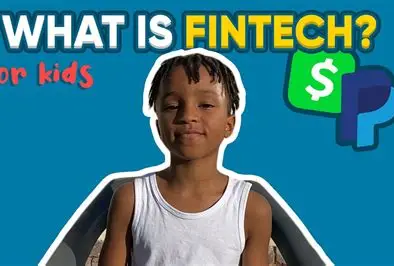Imagine being eight years old again. You’re still learning multiplication tables, your biggest worry is which Pokémon card to trade at lunch, and “interest rate” sounds like how excited your dog gets when you say “walk.”
But fast-forward to today’s digital playground, and there’s a colorful cast of apps, games, and kid-friendly debit cards promising to teach the next generation how to manage money. It’s called Fintech for Kids, and it’s growing faster than a piggy bank after grandma’s weekly visits.
So, why all the buzz? And how are these tools reshaping financial education for kids? Let’s dive into this exciting, slightly adorable corner of fintech, where dragons teach compound interest and allowance gets direct-deposited.
Why Teach Kids About Money in the First Place?
Money is weirdly invisible nowadays. We swipe, tap, and click, but rarely handle actual cash. For kids growing up in a cashless world, it’s easy to think money is an unlimited resource that magically appears on your phone screen.
Here’s why early financial education matters:
Habits form young: Research shows our money habits are shaped by age seven.
Digital literacy: Kids need to understand not just coins and bills but also digital payments, subscriptions, and online scams.
Confidence and independence: Knowing how to budget, save, and spend wisely builds self-esteem and resilience.
But telling a seven-year-old to “check your budget before buying Roblox skins” won’t get you far. That’s where fintech for kids comes in, turning boring money lessons into fun, gamified, and interactive experiences.
What Exactly Is Fintech for Kids?
Fintech (financial technology) for kids is a catch-all term for tools that help children learn, manage, and interact with money, usually through:
Mobile apps and games
Kid-friendly debit cards
Online platforms for allowances, chores, and saving goals
Educational content (videos, quizzes, comics)
These tools bridge traditional piggy banks and modern digital finance, offering a safe sandbox for kids to practice financial skills.
The Fun New Tools Teaching Kids About Money
Gamified Savings Apps
Imagine an app where saving $5 feels like leveling up in Minecraft.
Apps like PiggyVest Kids, iAllowance, and Bankaroo use colorful graphics and rewards to make saving money exciting. Kids can:
Set goals (e.g., save $20 for a new toy)
Track progress visually (thermometers, treasure chests, dragons guarding gold)
Earn badges for consistent saving
Why it works: Kids see their money grow in real time, linking effort with reward.
Debit Cards for Kids
Yes, kids now have debit cards, often connected to apps their parents oversee. Popular ones include:
Greenlight
GoHenry
BusyKid
Revolut <18>
Here’s how they typically work:
Parents load money onto the card (allowance, chore payments, birthday cash)
Kids spend at stores or online, with spending limits and category controls
Kids and parents both get app notifications for each purchase
Beyond spending, these platforms teach:
Budgeting (dividing money into “spend,” “save,” and “give” pots)
Tracking expenses
Understanding digital payments and subscriptions
Why it works: Kids learn real-world consequences. Buy too many milkshakes? No money left for that video game.
Chore & Allowance Trackers
Remember the hand-drawn chore chart on the fridge? Meet its digital evolution.
Apps like RoosterMoney and Allowance+ let parents assign chores and link them to payments. Kids see:
What tasks are due
How much they’ll earn
Their current balance
Some even have penalty systems (e.g., skipping chores reduces allowance).
Why it works: Kids learn money comes from effort, not thin air. Plus, negotiating chore prices builds real-life negotiation skills!
Investing Simulators and Real Accounts
Yes, even investing has gone kid-friendly.
Apps like Stockpile and Acorns Early let parents open custodial investment accounts. Features include:
Fractional shares (kids can “buy” $5 of Disney or Tesla)
Simple explanations of stocks and ETFs
Visual trackers of portfolio performance
Some apps even run stock market games, where kids manage pretend portfolios.
Why it works: Investing stops being abstract. Kids see how markets go up and down, and learn patience.
Educational Games and Stories
Some fintech tools don’t handle real money but teach concepts through stories, comics, and games.
For example:
Adventure Capitalist (a silly tycoon game)
Peter Pig’s Money Counter (by Visa)
Comics about budgeting, saving, and avoiding scams
Why it works: Kids remember stories and games more than lectures. A talking pig beats a spreadsheet every time.
Why Parents Love These Tools (And Kids Don’t Always)
Parents love:
Real-time control and oversight
Easy allowance management (no more “I forgot to get cash”)
Teaching real-world financial skills early
Kids sometimes grumble:
Spending limits can feel unfair
Tracking expenses feels like homework
Saving is less fun than spending
That tension, between freedom and guidance, is part of the learning process. And fintech tools often soften it with rewards, badges, and colourful dashboards.
Real Stories: How Kids Use Fintech Today
Meet some fictional-but-very-possible kids:
Ella (age 11):
Gets $10 weekly allowance via Greenlight
Divides money: $5 spend, $3 save, $2 donate
Saves for a hoverboard, checks app to see progress
Max (age 13):
Uses BusyKid to track chores (cleaning garage = $5)
Buys V-Bucks for Fortnite with his debit card
Invests spare change into Disney stock via Stockpile
Leila (age 8):
Plays a savings game where feeding a dragon coins makes it grow
Asks parents to add real birthday money to the app
Learns that “saving takes time, but dragons love gold”
These stories show fintech blending into daily life, not as a separate lesson, but as part of chores, games, and spending choices.
Tools Parents Should Look for
With so many apps, how do parents choose? Here are key features to look for:
Parental controls: Spending limits, notifications, blocking certain merchants
Educational content: Tips, videos, or quizzes kids actually enjoy
User-friendly design: Bright, simple dashboards kids can read easily
Goal setting: Visual trackers that celebrate progress
Safe and secure: Reputable providers, data protection, and FDIC-insured accounts
Customization: Adjust chores, allowance, and saving goals to fit your family
Does It Really Work? What the Research Says
Good news: Studies suggest these tools help.
A 2022 study from the University of Cambridge found gamified finance apps improved kids’ understanding of saving and budgeting. Kids using chore-linked allowance apps showed higher saving rates than those with cash alone.
But tools aren’t magic. Success depends on:
Parental involvement
Regular conversations about money
Letting kids make small mistakes (better now than later)
Tips to Make Fintech for Kids Even Better
Talk about real-life money decisions
“Should we buy this pizza or wait for Friday? Let’s check the budget.”Share your mistakes
“I once spent too much on a gadget and had to save for months.”Make giving part of the plan
Let kids choose a charity and see the impact of donations.Use stories and humor
Explain interest rates like a hungry monster eating debt, or growing your savings.Update tools as kids grow
Move from saving apps to investing accounts as your child’s understanding deepens.
The Balance: Tech vs. Talk
Fintech tools can gamify and automate lessons, but nothing replaces family conversations.
Imagine explaining why you’re switching insurance, or how you’re saving for vacation. Kids learn by watching, asking, and sometimes rolling their eyes. The apps support those lessons; they don’t replace them.
Fintech for Every Kid: Inclusion Matters
Fintech for kids also sparks hope for broader inclusion.
Unbanked families: Prepaid debit cards can introduce banking to kids whose parents don’t have traditional accounts
Neurodiverse kids: Visual dashboards help kids with ADHD or autism understand abstract money concepts
Different income levels: Many tools are free or low-cost, making financial education more accessible
Still, digital access remains a hurdle. Around 14% of U.S. school-age kids lack reliable Internet, so fintech isn’t a silver bullet.
What’s Next? The Future of Fintech for Kids
Expect more:
AI-powered tutors explaining money concepts
AR games where kids “find” virtual coins in real parks
Social saving features (friends pooling money for a gift)
Carbon footprint tracking (“Your new shoes = X trees to plant”)
And maybe, just maybe, a future where kids explain compound interest to their parents.
Making Money Fun (And Meaningful)
Financial education used to mean dusty books and stern lectures. Today, it can be a dancing dragon, a chore tracker that pings your phone, or a debit card that gently nudges you to save.
Fintech for kids is reshaping how children learn to navigate the digital economy, one colorful dashboard at a time.
The goal isn’t to create tiny Wall Street brokers, but confident, thoughtful young people who see money as a tool, not a mystery.
And remember: The best lessons still happen around dinner tables, at the grocery store, or while debating which ice cream flavor to buy on a hot afternoon.
So, whether your kid is feeding coins to a virtual pig or tapping a real debit card at the snack bar, they’re learning. And that’s worth every penny.
Quick Checklist for Parents
Set up a kid-friendly debit card or savings app
Create spending, saving, and giving pots
Talk weekly about money choices
Celebrate milestones (first savings goal reached!)
Let kids make small mistakes, then discuss why
Fintech for Kids is more than shiny apps, it’s about building lifelong skills, confidence, and maybe even a little fun along the way.


